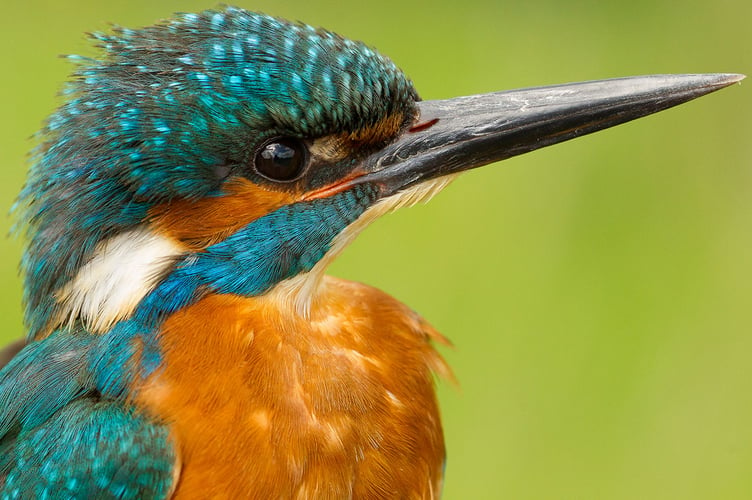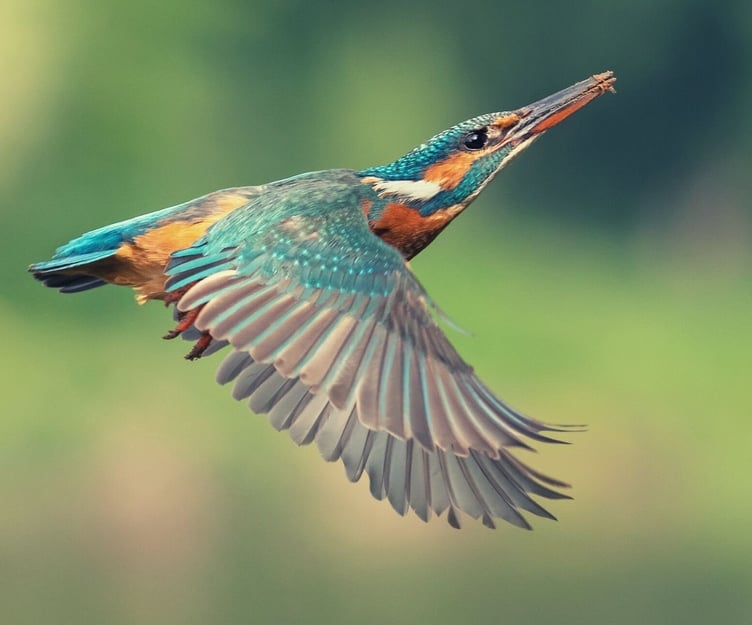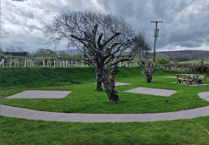FOR many people, all they will see of kingfishers is a fleeting glimpse of a small turquoise and copper-coloured bird flying at lightning speed along a waterway and rapidly disappearing from view.
Or a bird flying away may show the electric-blue flank down its back. Seeing a kingfisher is always a very special moment.
We are fortunate on Exmoor that there is a reasonably healthy population of kingfishers, so much so that they can be regularly encountered, although an element of luck and perseverance is required to obtain good views.
If you are fortunate, you may spot one sitting patiently on a low branch over the water, waiting for its next meal to swim by. Kingfishers are territorial and often use the same perches regularly.
A kingfisher must eat 60 per cent of its body weight every day to survive. Its typical prey will be small fish such as minnows, bullheads and sticklebacks, but they will also eat aquatic insects, freshwater shrimps and tadpoles. They can often be seen bashing the caught fish on their perch to stun it before swallowing it.

These birds can dive at speeds of up to 25 mph when they spot a fish. Often the fish will be just ten inches under the water. A kingfisher will grab its prey with its dagger-like beak.
Its beak is designed to be aerodynamically efficient, too, allowing it to dive from its perch towards its prey with maximum speed and minimum splash, displaying impressive dexterity. Kingfishers also have specially-adapted eyes to enable them to see their prey under water.

Kingfishers are serially monogamous, seeking a new mate every year. The female is given food by the male as part of the courtship ritual.
Two to three clutches of glossy white eggs are laid yearly in April and July, with sometimes a third clutch in early October. Each clutch consists of six to seven eggs, hatching after 19 to 21 days.

Kingfishers nest in cavities, such as tunnels dug into natural or artificial banks. A pair may have to catch up to 120 small fish a day to feed their young. Once they are big enough to leave the nest, the young are fed for only four days before the adults drive them out of their territory and start on a new brood.
The kingfisher’s flight call is a swift, low, sharp whistle: ‘cheee’, repeated two or three times. In fact, once you know and recognise the call, it can alert you to the bird’s presence, often before or even if you don’t see it.

Its feathers are moulted gradually between July and November. The main flight feathers may take 90 to 100 days to regrow after moulting. Females can be distinguished from males by the red patch at the base of their bill.
With a wingspan of 25 centimetres and a body length of 16 centimetres, kingfishers are only slightly larger than robins but twice as heavy. As they fly, their short, rounded wings stand out and whirr rapidly.

Kingfishers can be found widely on Exmoor on streams, rivers and reservoirs. Yet the first successful breeding record on Exmoor was not until 1923 and there have been few proven records of breeding recently.
Our rocky banks and fast-flowing rivers are not attractive to kingfishers. There are few suitable banks for their nests and these may be invisible or inaccessible to humans. Many kingfisher records are of the young birds seeking territory of their own in late summer and autumn.
Winter records are nearly all coastal, with birds often feeding in harbours, estuaries and along rocky shores. They are regularly seen in winter at Dunster Hawn and in the Exe valley.
Kingfishers suffer in harsh winters, as they are unable to access their usual food sources. I have personally seen them over the years by the rivers Barle and Exe, at Chetsford Water, Wimbleball Lake and Porlock Marsh and by the sea at Dunster Beach and Minehead.
Sources include ‘The Birds of Exmoor and the Quantocks’ by D Balance, B Gibbs, R Butcher.
For more information about the work of the Exmoor Natural History Society visit www.enhs.org.uk





Comments
This article has no comments yet. Be the first to leave a comment.